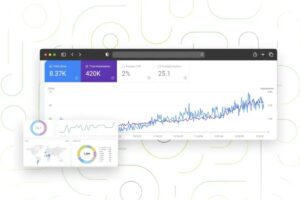Advertising has always been about one thing: getting attention.
Centuries ago, merchants shouted in marketplaces. Decades ago, brands plastered billboards across highways and filled TV screens with catchy jingles. But here’s the catch — those ads spoke to everyone and connected deeply with almost no one.
Fast forward to today: the digital world has changed the game. Now, advertising isn’t about yelling louder. It’s about listening closer. That’s where behavioral targeting steps in — a modern approach that doesn’t just push ads but understands audiences on a personal level.
Why Behavioral Targeting Matters Today
If you’ve ever wondered, what is behavioral targeting? — think of it as the bridge between raw data and human intent. Instead of throwing generic ads into the void, advertisers analyze patterns:
-
What you click.
-
What you search.
-
What you shop for.
-
Even what time of day you’re most active.
This isn’t random surveillance. Done ethically, it’s a way to respect your time — showing you only ads that actually matter.
For example, if you’ve been researching eco-friendly products, behavioral targeting ensures you see green brands and sustainable choices, not just another fast-fashion sale.
The Rise of Large-Scale Behavioral Targeting
Here’s where things get interesting. On a small level, it’s easy to understand why showing a shoe ad to someone who just searched for sneakers works.
But when scaled up, large-scale behavioral targeting transforms entire industries.
-
Streaming platforms predict which genres will explode next.
-
E-commerce platforms anticipate demand for products before they trend.
-
Travel sites know when people will start booking flights for summer, even before they do.
It’s not just about selling. It’s about predicting cultural moments before they happen.
Behavioral Targeting Examples That Shape Everyday Life
Let’s get real with some everyday examples:
-
The Weekend Shopper: You browse a few recipes on Friday night. By Saturday morning, ads for meal kits and grocery discounts greet you across your apps.
-
The Fitness Newbie: You watch a few workout tutorials. Soon, resistance bands, fitness apps, and sportswear ads follow — not randomly, but in sync with your new lifestyle.
-
The Traveler: You search for “best places in Thailand.” Behavioral targeting then connects the dots and offers not just flights, but hotels, luggage, and even travel insurance.
Notice the difference? Contextual ads might show you travel content while reading about beaches. But behavioral targeting follows your longer journey, predicting what comes next.
Contextual Targeting vs. Behavioral Targeting
This debate is everywhere: contextual targeting vs. behavioral targeting.
-
Contextual targeting is about the here and now. It’s like reading an article about hiking and seeing an ad for hiking boots.
-
Behavioral targeting is about the bigger picture. It tracks that you’ve been shopping for camping gear, browsing travel blogs, and saving money in your account. It knows you’re preparing for a trip before you say it out loud.
The truth? Both matter. But behavioral targeting digs deeper, giving ads context plus continuity.
Why Brands Need Behavioral Targeting
Let’s be honest — the digital ad space is overcrowded. Every business is fighting for attention.
Without behavioral targeting, brands waste money shouting at people who will never listen. With it, they:
-
Spend smarter.
-
Reach only audiences who care.
-
Deliver messages that feel personal, not pushy.
That’s why platforms like PropellerAds are vital. They give even smaller businesses the ability to use advanced targeting tools once reserved for giants. It’s advertising that feels efficient, ethical, and effective.
The Challenges Nobody Talks About
Of course, with power comes responsibility. Behavioral targeting has challenges:
-
Privacy: How much do users want brands to know?
-
Ethics: Where’s the line between personalization and intrusion?
-
Transparency: People will accept ads if they trust why they’re being shown.
The future of advertising depends not just on smarter targeting, but more respectful targeting.
The Future: Ads That Feel Like Guidance
We’re entering an era where ads won’t feel like ads anymore. They’ll feel like digital guides.
Imagine scrolling through your feed and instead of seeing a random promotion, you get a perfectly timed suggestion:
-
The podcast that matches your late-night mood.
-
The product that solves the problem you just Googled.
-
The travel deal that arrives right when you start craving adventure.
That’s the future of behavioral targeting — not interruption, but intuitive connection.
Final Thoughts
From billboards to algorithms, advertising has always evolved. But behavioral targeting represents something new: ads that finally listen as much as they speak.
It’s not just a marketing trick. It’s a shift in how brands and people connect online. Done right, it helps businesses grow, yes — but it also makes the internet less noisy and more meaningful for users.
In a digital world drowning in content, behavioral targeting is the lighthouse — guiding both advertisers and audiences toward what truly matters.
From billboards to algorithms, advertising has always evolved. But behavioral targeting represents something new: ads that finally listen as much as they speak.
In a digital world drowning in content, behavioral targeting is the lighthouse — guiding both advertisers and audiences toward what truly matters.


